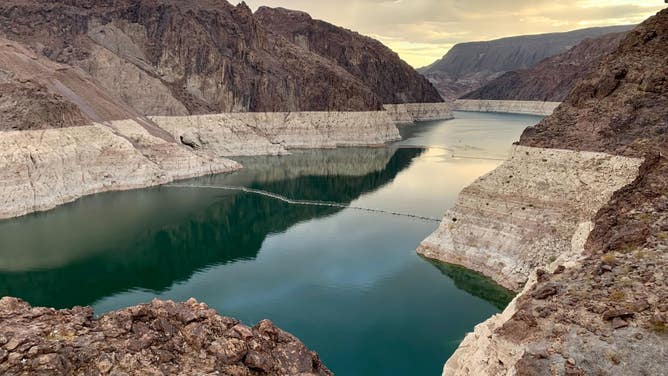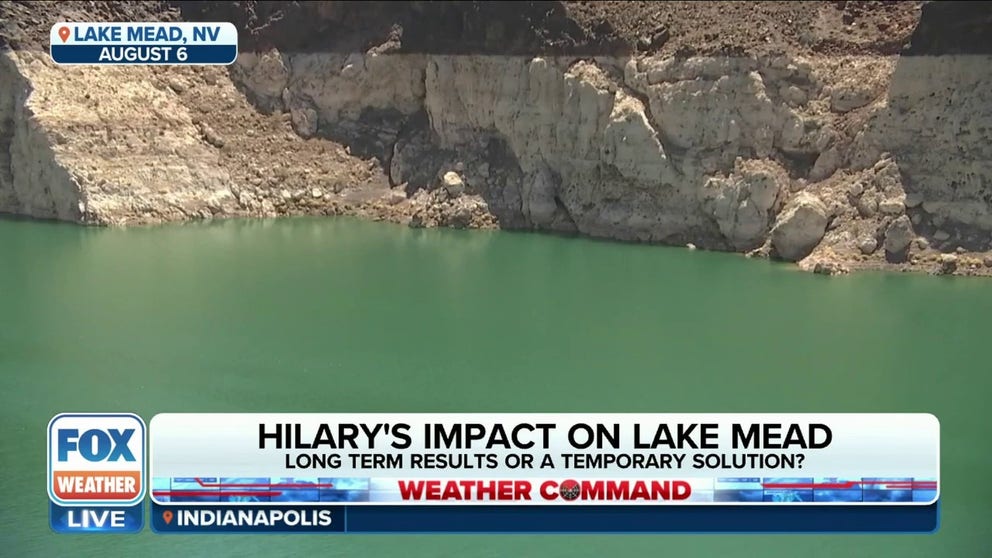'Not there yet': Beneficial rain from Hilary, record snowfall not enough to restore Lake Mead water levels
Hilary helped add some water to the basin and leftovers from Tropical Storm Harold may bring more, according to professor of snow hydrology Steven Fassnacht. How much rain makes it to the Colorado River Basin and into Lake Mead still has to be determined.
Lake Mead water levels up after snowy winter, former Hurricane Hilary
Lake Mead water levels were at record low levels last summer but snow over the winter and former Hurricane Hilary helped restore some water to the basin. Professor of Snow Hydrology Steven Fassnacht, with Colorado State University, joins FOX Weather to talk about how far Lake Mead has to go.
LAKE MEAD, Nev. – After a wet winter boosted water levels in Lake Mead, the drought-stricken reservoir also received beneficial rain from an unusual source for the Southwest. Former Hurricane Hilary delivered beneficial rainfall to Southern California and the Southwest, however, experts are still trying to shake out how much of the rain helped Lake Mead.
Colorado State University professor of snow hydrology Steven Fassnacht explained that record snowfall and rainfall last winter added moisture to the system, meaning farmers didn't need to draw from Lake Mead.
WATER ISSUES PERSIST AT HOOVER DAM, LAKE MEAD AFTER HISTORIC SNOWFALL
"Here in the Front Range of Colorado, where it rained so much that Denver broke records for summer rainfall, and that meant that people weren't watering their lawns," Fassnacht said. "So in the big picture for conservation and limited consumption, that was a good thing."
Hilary helped add some water to the basin, and leftovers from Tropical Storm Harold may contribute more, according to Fassnacht. How much rain makes it to the Colorado River Basin and into Lake Mead still has to be determined.

The so-called "bathtub rings" indicate the water level deficit at Lake Mead in August 2023.
(Robert Ray / FOX Weather)
"We need to see, but it looks like it's not going to make its way far into the Colorado River basin." Fassnacht said. "A lot of the water from Hilary fell in more coastal areas, fell to the west of the Colorado River Basin," Fassnacht said. "We can probably say the same thing about Harold. There'll be a little bit of lingering water from that, but it's not going to be a lot."
Record snowfall last winter from multiple atmospheric river-driven storms brought needed snowmelt into Lake Mead in the spring but still not enough to restore the losses over the past 20 years. The reservoir has dropped 170 feet over the past two decades.
The current water level is 164 feet below what would be considered a full pool of 1,229 feet.

Colorado River Watershed Drought conditions.
(FOX Weather)
Still, Lake Mead levels are on an upward trend this year compared to the past two years, which saw drops in the summer months heading into fall. Lake Mead water levels have risen 24 feet since July 2022, when the reservoir was at a historic low.
Drought conditions in the Southwest and throughout the Colorado River Watershed continue to be moderate to abnormally dry.
Fassnacht said another few winters with well above average rain and snowfall will be needed to restore Lake Mead.
"If we look at those back bathtub rings, we can see that they are not vertical," Fassnacht said. "It's not like a typical bathtub. We're so low that it's going to take a lot of water to really fill that out. So we're headed in the right direction, but we're not there yet."
